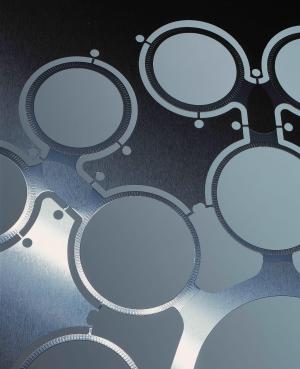Photo Etching: 2023's Top Ten FAQs
Over the course of a year, we talk with a lot of people--most of whom have questions. We've compiled the "frequent fliers" list for you.
Feel free to reach out to me or Max should you have questions we didn't cover here.
What kinds of material can you etch?
We can etch a wide variety of metal alloys including many iron, nickel, copper and aluminum alloys, as well as silver and molybdenum. Here’s a list of some of the most popular metals. If you use etched braze foil pre-forms, we can do that, too.
If you have something in mind, just ask us.
We don’t etch titanium, tungsten, zirconium, gold and other exotic metals. And we don’t etch anything that is not metal, such as glass or plastic, for example.
We need to have part and lot numbers etched on our parts. Can you do this?
No, we don’t do part marking unless we are fabricating the parts at the same time. For part marking, we can recommend tustech.com.
We’d like to do our own etching in house. Where can we buy a photo etching machine?
There isn’t a “photo etching machine.” It’s not a photocopier. It takes some serious capital equipment—clean line, laminating, imaging, developing, etching, and stripping machines, 10,000-plus square feet of floor space (minimum), and compliance with a massive-and expensive- amount of local, state and federal environmental regulations. Watch the video here.
When it comes to etching, let us do it for you. We’ve been doing this since 1965—we’re very good at it.
We need to have some very fine screens made. What is the smallest hole you can make with photo etching?
The theoretical minimums would be 100-micron holes on 50-micron material with minimum 125-micron ligament between the holes. Plus or minus about 37 microns. There’s a high probability of missing holes when the process is pushed this far.
As a rule, the minimum hole size must be at least 110% of metal thickness and minimum center-to-center spacing would be hole diameter plus metal thickness.
What is the smallest part you can make?
We’ve made parts as small as .020” diameter. 50,000 pieces fit in a tea cup.
And, what’s the biggest part?
We can image up to 27” by 58” sheets.
What is the range of metal thicknesses that you can etch?
We have etched stainless steel as thin as .0005”. We routinely etch .001” thick steel, nickel, copper and aluminum alloys. As a practical matter, we prefer to limit thickness on “white metals” (steel, nickel, silver, moly) to a maximum of .040” (~1 mm). The “red metals” (copper, brass, bronze, etc), we will etch up to .065”. And in aluminum, we’ll go up to .080” (~ 2 mm).
What dimensional tolerances can the etching process achieve?
Typically, we design the work sheet to achieve average tolerances of +/- 15% of the metal thickness, to a practical minimum of +/-.0015” for metals .010” and less. The size of the work sheet has an impact on both the minimum tolerances and the cost.
Here’s an example of that relationship.
Just because your solid modeling environment will let you put extraordinarily tight tolerances on dimensions, doesn’t mean you should. Someone will have to make the part, and no one will want to.
As we say, “CBYD.” Call before you design.
Why would I choose photo etching over stamping or laser cutting?
Here are a few of the advantages offered by photo etching. And, with our recently installed LED-powered direct digital imaging system, we will be able get to production directly from your cad file.
What about Nadcap? Is photo chemical machining considered to be a “special process?”
Photo chemical machining is not a Nadcap “special process” because it does not alter the characteristics of the metal. However, chemical milling -as it is often used in aerospace applications- may be subject to Nadcap checklist 7108/5. When chemical milling is used to remove metal from areas of parts selectively, such as engine nacelles, in order to reduce weight, the “characteristic” of the metal thickness has been changed.


